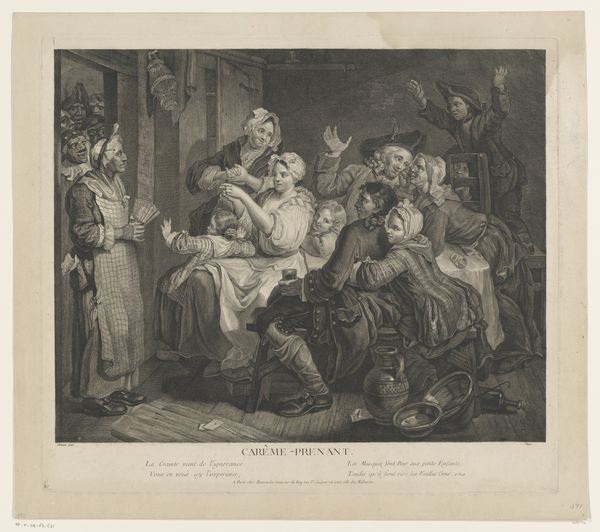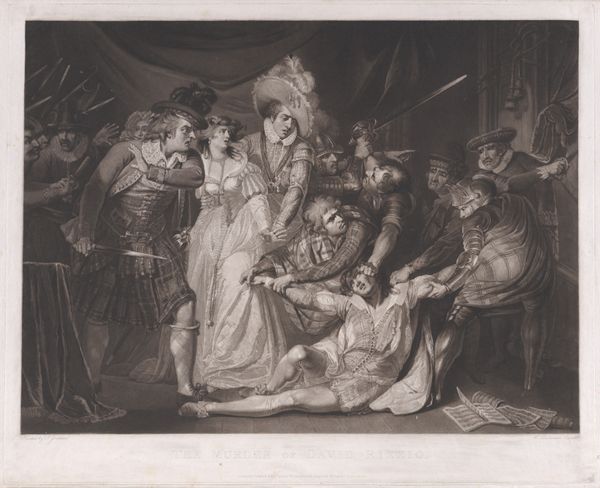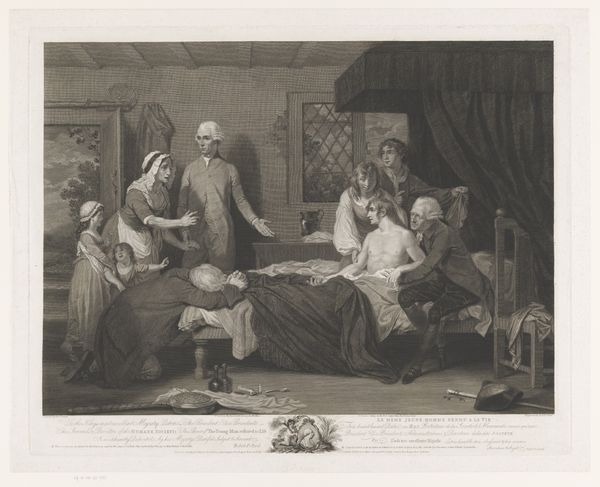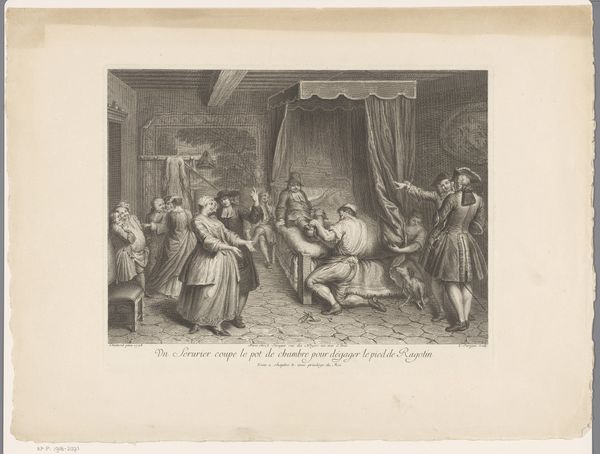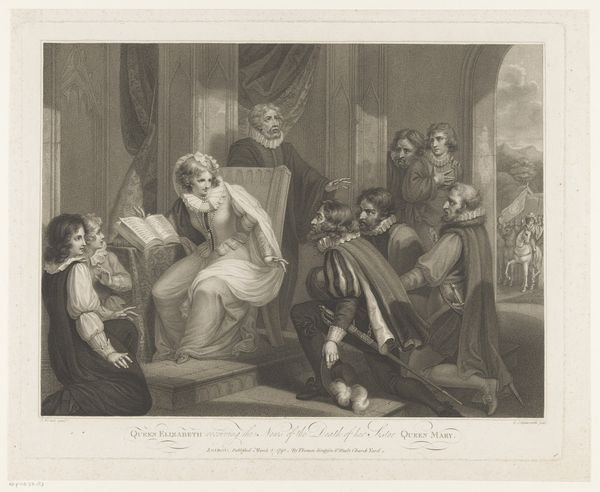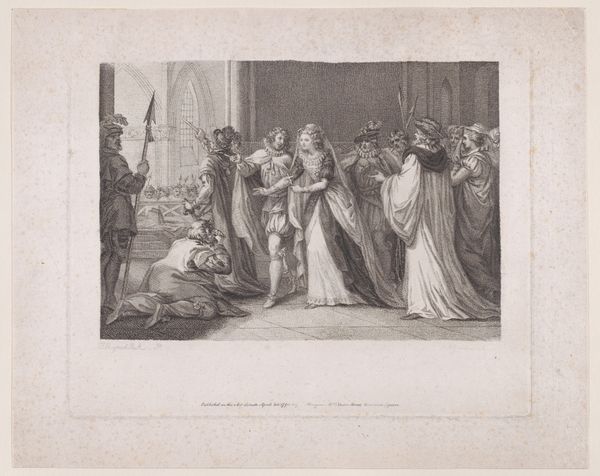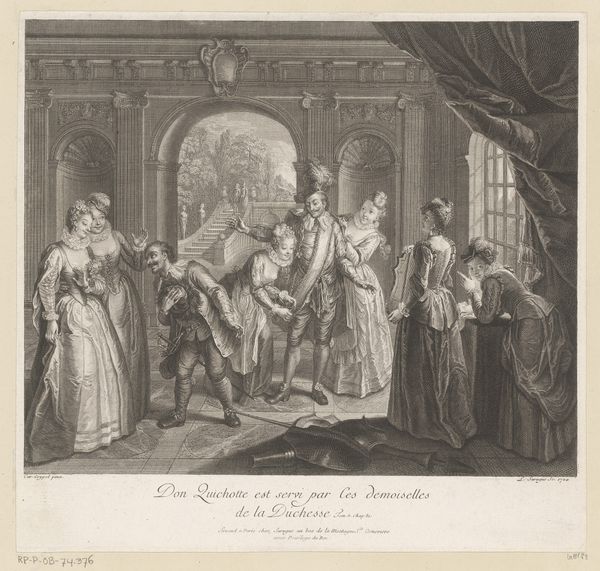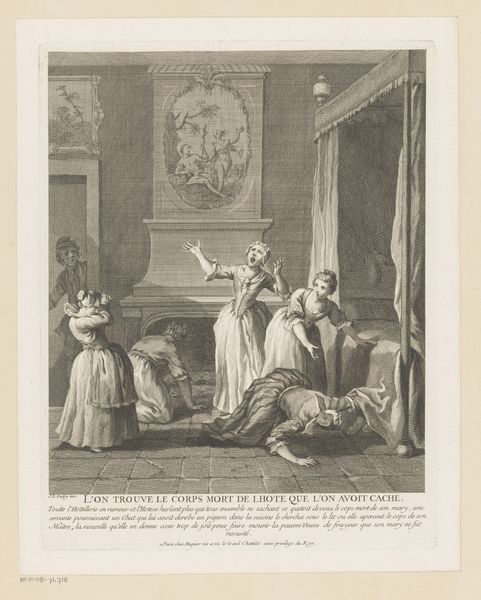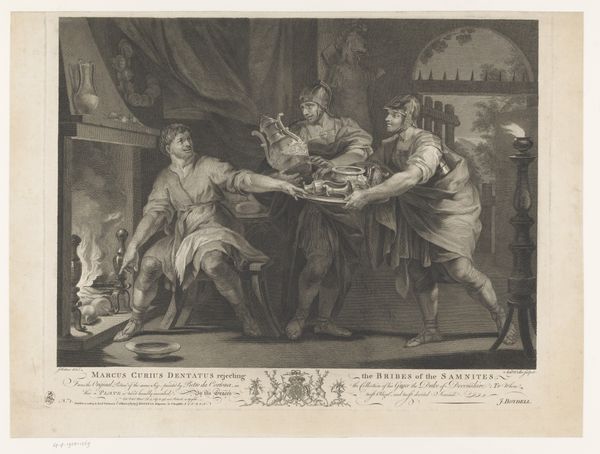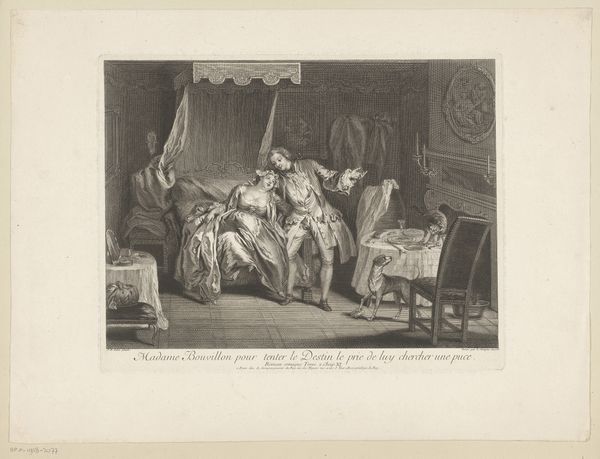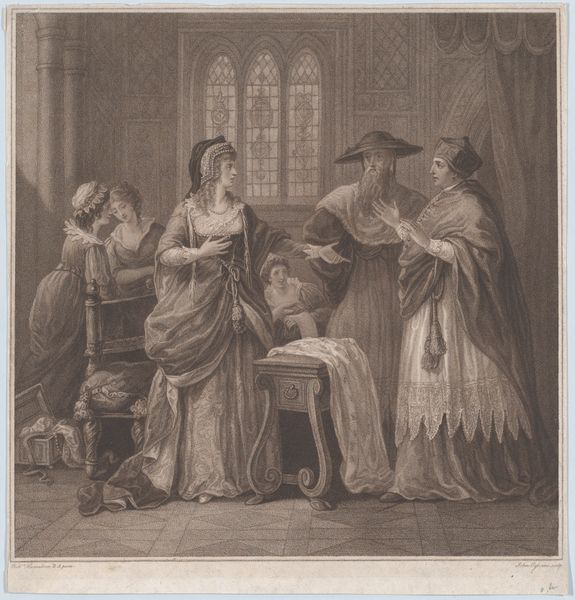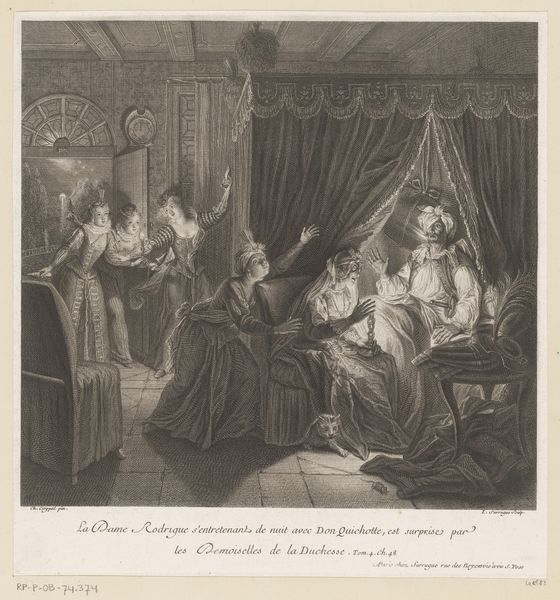
Mary, Queen of Scots witnessing the murder of David Rizzio 1791
0:00
0:00
drawing, print, engraving
#
drawing
#
narrative-art
# print
#
figuration
#
england
#
romanticism
#
history-painting
#
engraving
Dimensions: Sheet: 19 3/4 × 25 1/16 in. (50.2 × 63.6 cm)
Copyright: Public Domain
Curator: This dramatic engraving is titled "Mary, Queen of Scots witnessing the murder of David Rizzio." Created in 1791 by Isaac Taylor, Jr., it portrays a pivotal and gruesome moment in Scottish history. Editor: It certainly has a theatrical air to it, wouldn’t you say? The stark contrast between light and shadow heightens the emotional impact. It feels so overwrought, as though lifted straight from the stage. Curator: Well, that’s in line with the aesthetic sensibilities of the time. England was deep in the throes of Romanticism, with its emphasis on heightened emotions, the sublime, and a fascination with dramatic historical narratives. Rizzio’s murder was definitely ripe material for Romantic imaginations. Editor: The composition, with its swirling figures and diagonal lines, certainly enhances that dramatic feel. Look at how the artist uses the figures themselves to create implied lines of force converging on Rizzio. It's all rather carefully arranged chaos, wouldn't you agree? The use of perspective is also rather striking: everything feels crowded, as if there were no escape. Curator: Yes, the engraving illustrates a politically charged episode. Rizzio, Mary’s private secretary and a Catholic, was murdered by a group of Protestant lords who opposed Mary's rule. The scene symbolizes the power struggles and religious conflicts that defined 16th-century Scotland. This was used to condemn Catholicism in Protestant England. Editor: What stands out to me is the texture achieved through the engraving. You can almost feel the cold steel of the weapons, the frantic desperation in Rizzio’s grasp, and the icy horror etched on Mary's face. Even the details, like the overturned table setting, add to the sense of pandemonium. The detail creates an experience that one could feel, as much as see. Curator: Absolutely. It offers insight into how historical events were interpreted and utilized to shape cultural and political discourse. The event quickly transformed into legend. Editor: Ultimately, this artwork’s impact comes from its formal elements to make such historical horrors emotionally accessible, if perhaps embellished. Curator: Indeed. It presents us a window into how history and politics could be so persuasively blended with emotional spectacle to engage 18th-century audiences.
Comments
No comments
Be the first to comment and join the conversation on the ultimate creative platform.
